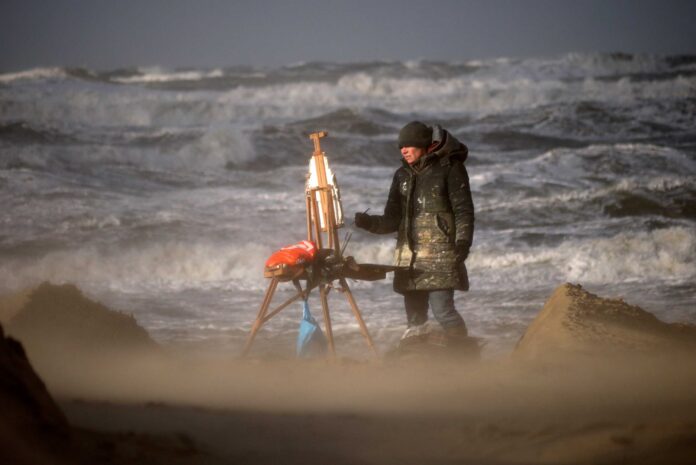On plein air painting > It’s only natural to wish to stay out of the rain when the outdoor world is wet—instead of setting up your easel in a storm, to stay indoors, and work behind the computer when everything seems dull and grey.
Bad Weather Opportunities
by Roos Schuring
roosschuring.com
Maybe it’s time to show you a few secrets about “bad weather!”
First of all, getting out on days without sunshine seems counterintuitive to a lot of painters. Painters, after all, notoriously thrive on light. But there are many subjects that glow all by themselves, especially on grey days. A few years ago, I found this to be true. Painting on grey days has now become my trademark.
In a grey seascape, the creamy white foam of the waves crashing on the shore gives a special luminosity to an otherwise notably greyscale painting.
The white dapple of cows also lights up against the stormy grey skies. There is, of course, a lot of beauty intrinsic to cows in a field, but the fact that cows stand so still in the rain adds a new dimension to their natural pastoral beauty. It is the rain that imbues the ordinary cow with a kind of dignity. What a great painting opportunity! To lend a kinetic quality to an overall static composition, I located reflections of cows in the ditches, so common here in the Netherlands, and reflections of people walking the beaches.
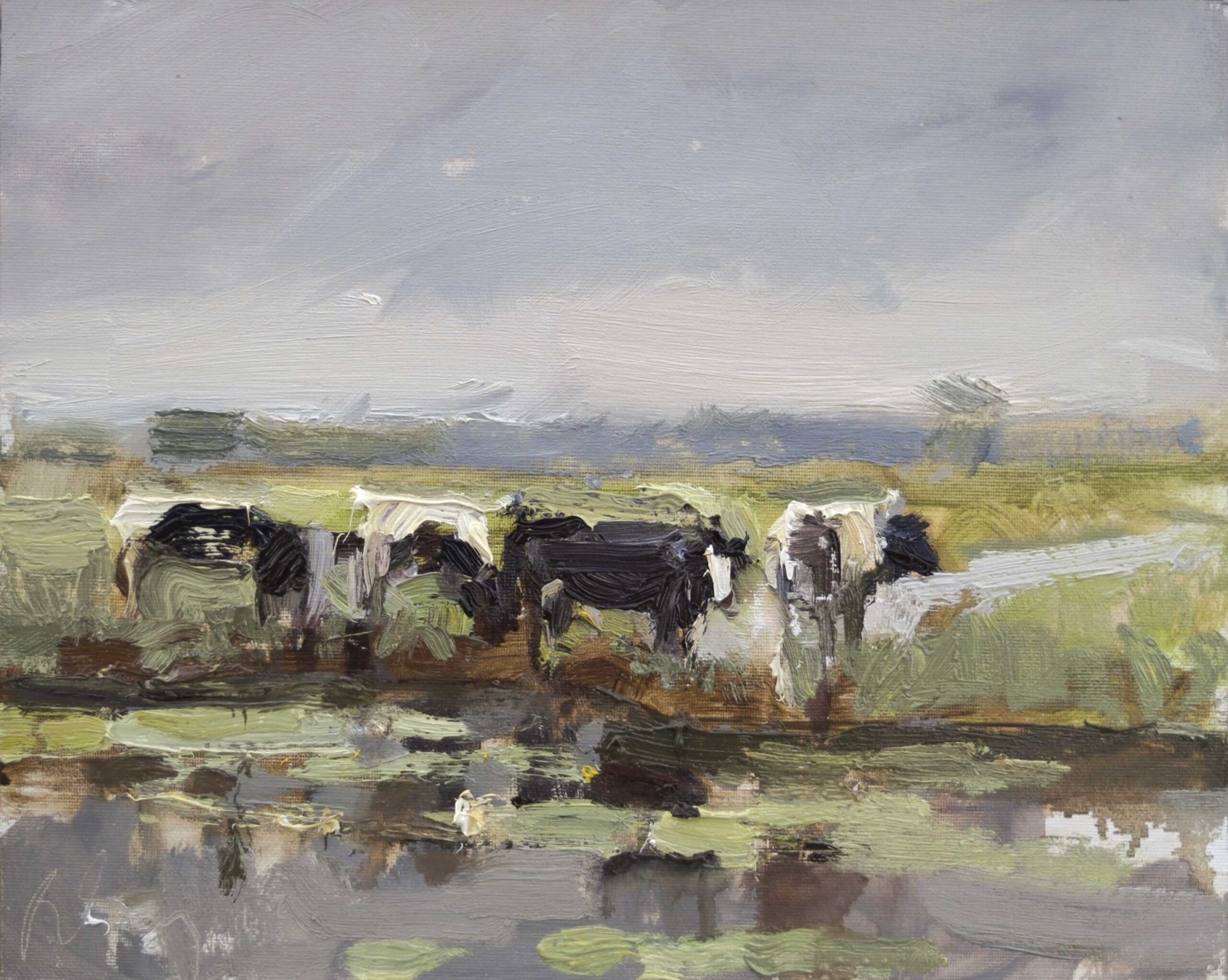
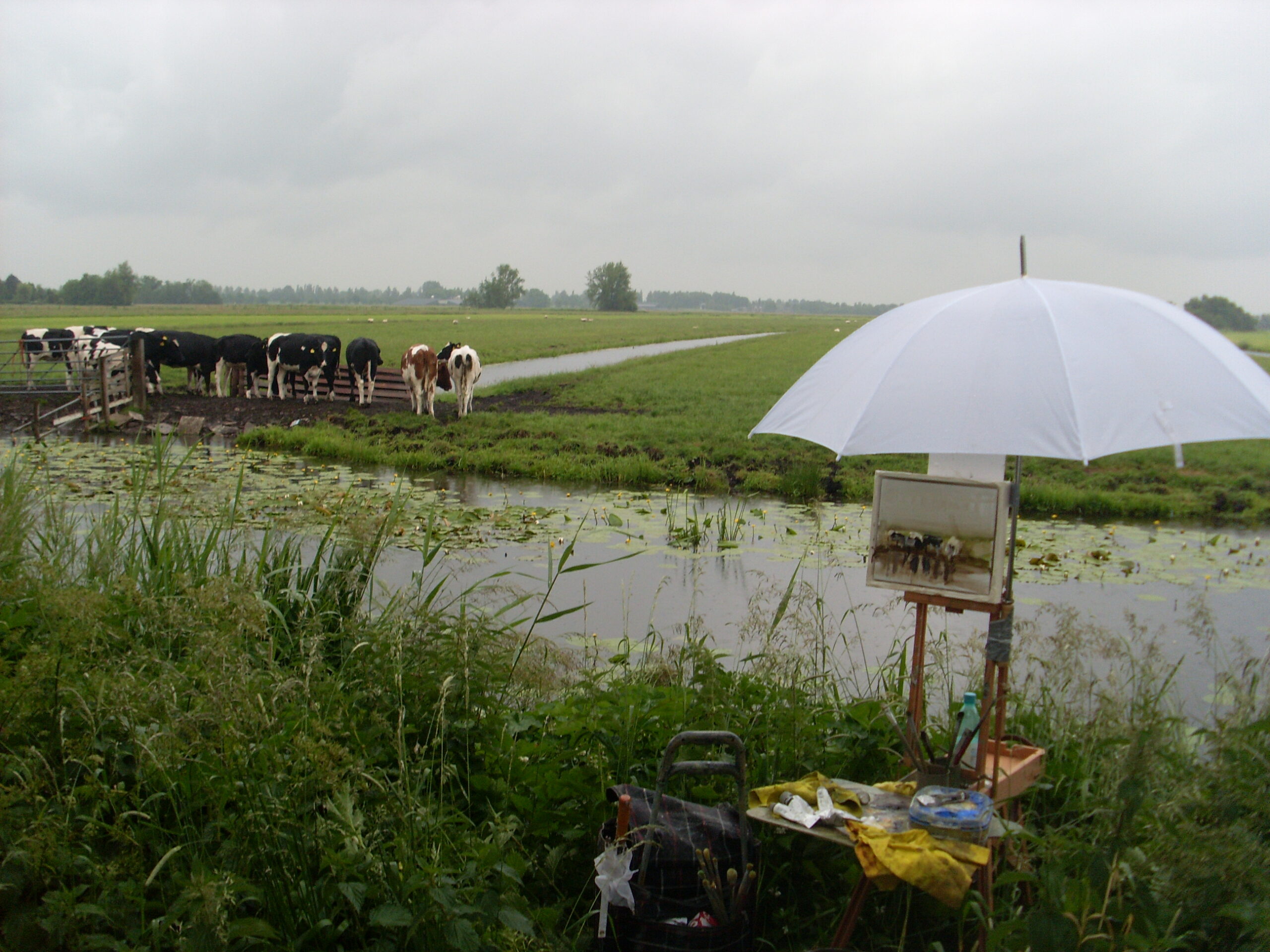
A painting without a blue sky, or even with a blue sky only reflected in water in a painting that does not have the blue as a fifth or fourth color, can bring a restful and contemplative sense of harmony. On grey and cloudy days, days in overcast, the paintings will become more natural looking. Sometimes we see this especially in paintings from the period between 1830 and 1920.
I think I found all of this beauty out of the frustration of feeling obliged to stay indoors when bad weather was forecasted. But since having children, their schooldays have become my painting days, and no matter the weather, I must find a location and paint.
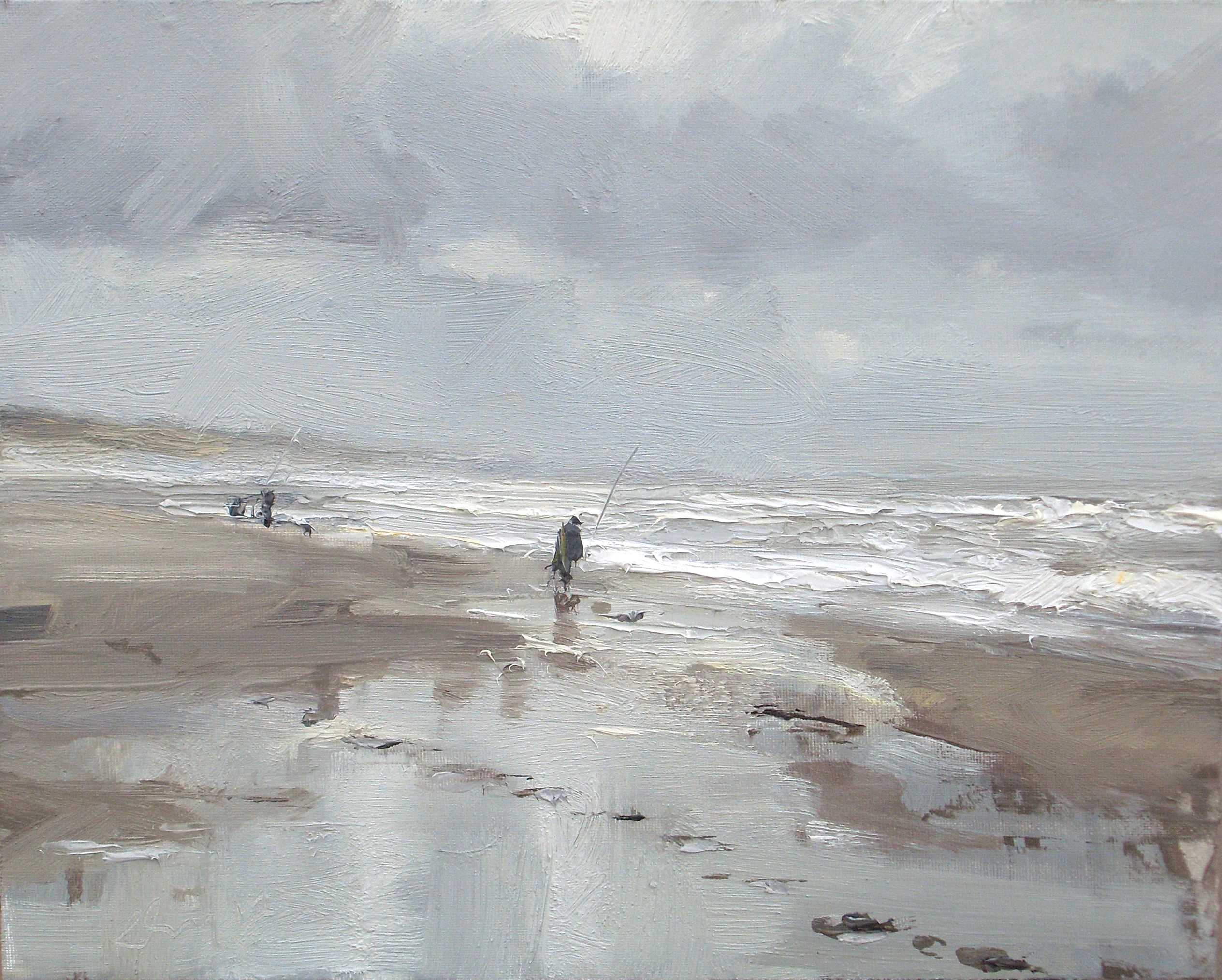
I’ve painted in rain, storms, snow and sure, also on hot summer days. In the hot summers, the extreme circumstances are the people themselves, their movement, their curiosity affecting my concentration. They and I both swelter in the weather, when I am working hour after hour, painting the lively and colorful scenes on the beaches.
For me, all weather is good weather for painting. It’s simply thrilling when the elements are an opposing factor: beginning the painting, bearing witness to a different kind of beauty and light. It becomes like a sporting event to me. In fact, in hostile weather, you are less certain of the outcome of the painting until you work through the issue of the weather. You experience joy and despair and joy again, fighting to win, layering the painting with tensions that may not be present in plein air paintings when the landscape is simply pleasant. The extra excitement attendant to the kind of beauty, freedom and joy of being outdoors—and the quality of results I have been able to achieve—has led me to work exclusively en plein air.

Myths
People have asked me, “Maybe you are used to the cold more, because you do it often, painting in rain and snow?” It’s funny how people think I don’t get wet the same way they do and don’t get cold to the bone. But of course I do. In extreme circumstances, I do swear, complain, or tell myself I must be crazy, but the importance of finishing the piece sustains me. I trick myself. I visualize my warm car while working. Or beforehand I’ll try to convince myself I don’t need to get outside, because there’s loads of work to be done indoors.
But what takes me outside is knowing that the best pieces are done under difficult circumstances. In fact, I think pleasant circumstances make me a lazy painter. It shows. Because of this I even deny myself the pleasure of eating while working. Often I don’t eat for an entire six-hour painting session—just to stay focused. I use all kinds of thermal underlayers in clothes, along with umbrellas and even duct tape. When it all blows away, or the snow will blow horizontally, then I will take refuge in my car at last (and paint). But I do need to have the freedom of movement to really paint.
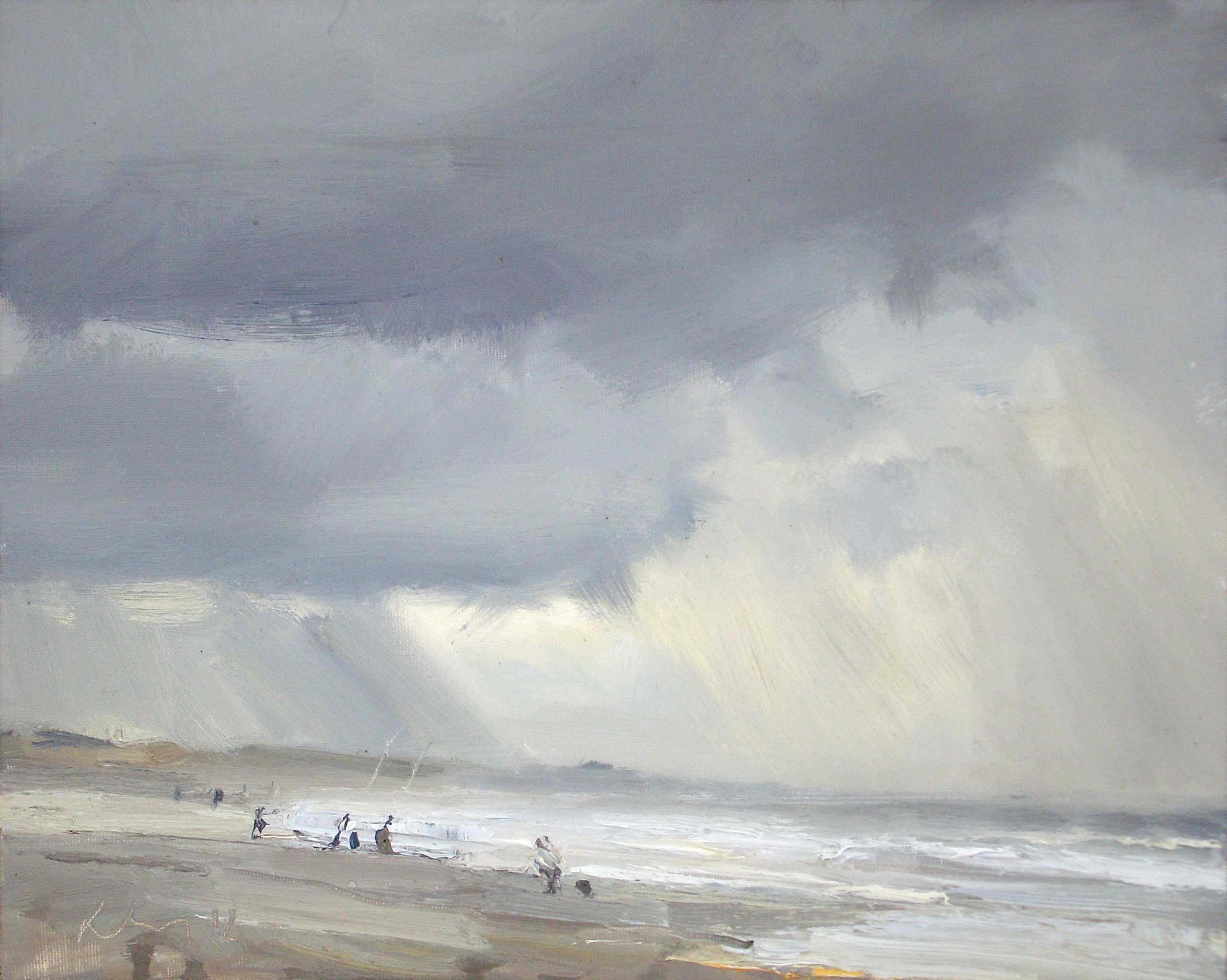
Another myth is the changing light, the need to finish in two hours because the day is dwindling. I think that is just bananas. The piece is finished, whenever it “says” finished. I would not finish it from photos indoors. That for me would be almost impossible. It wouldn’t add to the quality of the work. The brushstrokes wouldn’t be pure anymore, because they would be made, not representing nature, or movement, but because they would be copying a photograph. I can tell the difference in an artist’s brushstrokes, just by looking at a painting. En plein air painting will give the piece a touch of magic. That much is true.
Of course, the light changes. You keep what you like, add change to it. Often I change the sky five times. When a painting is “underworked”—not challenging, or when there’s fear—you can tell, you can feel it. Keep in mind what you saw that you want to portray. You can work from memory as well—outdoors. Often situations will return, on the same day. Don’t chase the change.

Nature is obviously far bigger than painting itself. The change of nature, the quick-changing light, allows us to see magic happening every day. When you wait for a sunny day to paint, you’ll be missing out on a lot of this magic! Happy painting!
And browse more free articles here at OutdoorPainter.com

